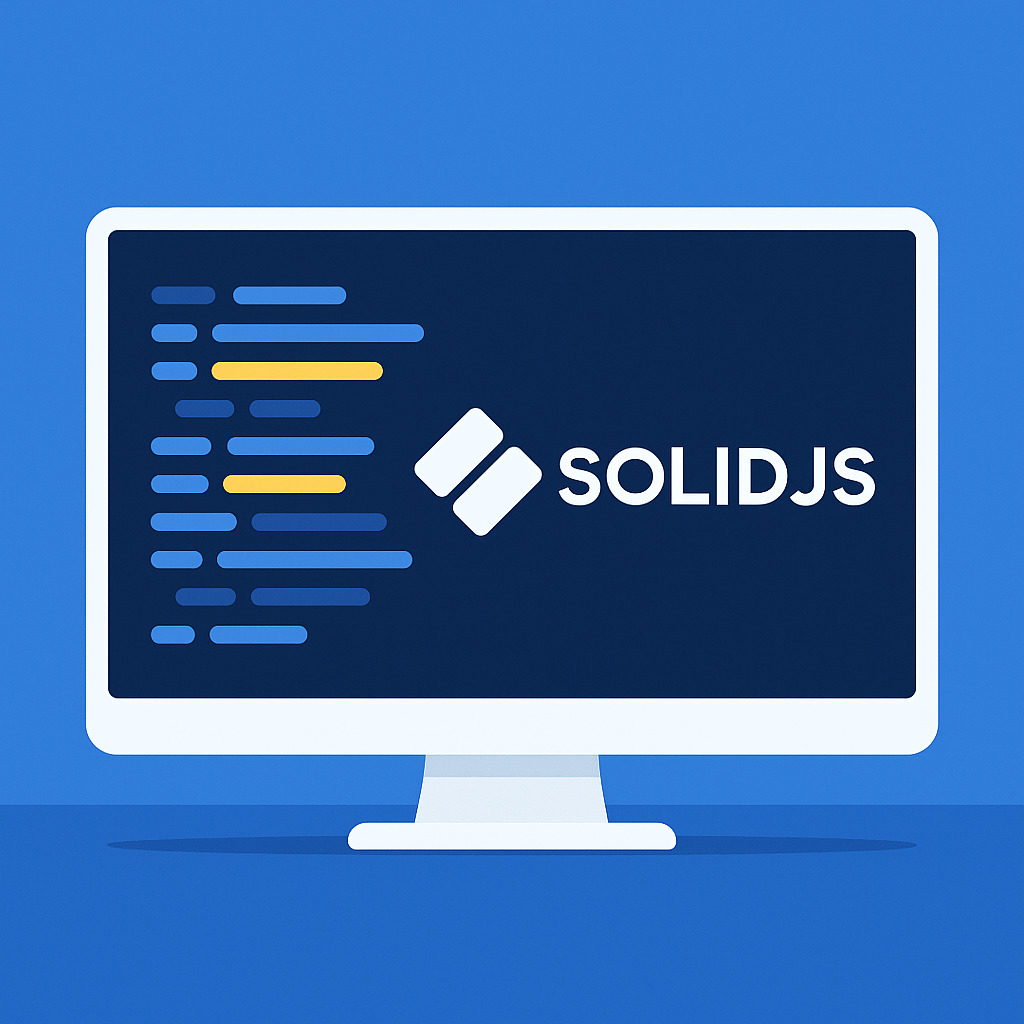Why SolidJS Is Gaining Popularity in 2025
- 1 min read
Explore why SolidJS is gaining momentum in 2025 as a preferred frontend framework. Discover its key features, performance advantages, and how it compares to React and other modern libraries.

SolidJS is rapidly becoming a go-to choice for developers in 2025. Though it started as a lightweight JavaScript framework in the early 2020s, SolidJS has now carved a distinct place among the top frontend tools. But what makes it so appealing in today’s rapidly evolving ecosystem?
What is SolidJS?
SolidJS is a declarative, efficient, and flexible JavaScript library for building user interfaces. Created by Ryan Carniato, it focuses on fine-grained reactivity without using a virtual DOM, unlike many of its competitors.
Key Features of SolidJS
Here’s what makes SolidJS stand out in 2025:
- No Virtual DOM: It updates the real DOM directly, reducing overhead and improving performance.
- Fine-Grained Reactivity: Solid’s reactivity system tracks dependencies at a granular level, making updates extremely fast.
- Compilation-Driven: Like Svelte, Solid compiles components to optimized JavaScript at build time.
- TypeScript Support: Solid offers strong TypeScript integrations out of the box.
- Small Bundle Size: Its core weighs only a few kilobytes, which is great for mobile-first apps.

SolidJS vs React: A Quick Comparison
Here’s how SolidJS stacks up against React in 2025:
- Performance: Solid is significantly faster in rendering benchmarks due to direct DOM updates.
- Learning Curve: Similar to React in syntax, making onboarding easier.
- State Management: Built-in reactive primitives eliminate the need for external state libraries.
- Ecosystem: React still leads in tooling and community, but Solid is catching up fast.
Why Developers Are Switching to SolidJS in 2025
- Speed: Apps built with SolidJS are noticeably faster.
- Simplicity: Developers enjoy writing less boilerplate.
- Modern Approach: The compilation model aligns with current frontend trends.
- Growing Ecosystem: An expanding set of tools and integrations supports adoption.
Use Cases Where SolidJS Excels
- High-performance dashboards
- Mobile web apps
- Embedded UIs
- Lightweight web widgets
Community and Ecosystem
While still smaller than React or Vue, SolidJS now has a vibrant GitHub community, growing npm downloads, and improved documentation. Key third-party libraries are quickly adding Solid support, showing its staying power.
Future Outlook
With the rise of reactive programming and performance-focused web apps, SolidJS is well-positioned for long-term growth. Its architecture resonates with the performance-conscious goals of modern developers and AI-enhanced frontends.
🔗 External Resource: SolidJS Official Documentation
Conclusion
SolidJS offers a compelling mix of speed, simplicity, and modern features. For teams looking to build reactive, efficient UIs in 2025, SolidJS deserves serious consideration.
Need help scaling your frontend project with top SolidJS developers? Contact us to explore the possibilities.

Top Frontend Frameworks in 2025
Discover the top frontend frameworks in 2025 including React, Vue, Angular, SvelteKit, and SolidJS. Learn which framework best suits your project based on scalability, performance, and developer experience.

React 19: What’s New in the Latest Release
Discover the latest features in React 19, including the new React Compiler, metadata handling, server components, and enhanced form tools—essential updates for every frontend developer in 2025.